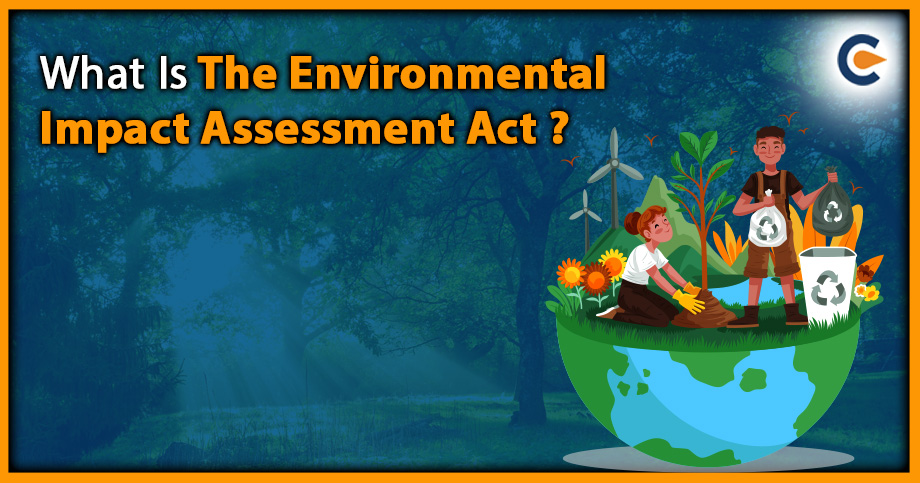The environmental impact assessment act and regulations are the legal framework that governs the process of conducting environmental impact assessments in many countries worldwide, including India. The specific details of these acts or regulations may vary depending on the country or jurisdiction. Still, the general purpose is to ensure that proposed projects or developments are assessed for their potential environmental impacts. The provisions in these regulations are designed so that appropriate mitigation measures are put in place to minimise any negative consequences. In addition to establishing requirements for the EIA process, the EIA Act may also establish penalties for non-compliance, such as fines or project cancellation. It may also provide public input and feedback mechanisms, such as public hearings or consultations.
Overview of the EIA Notification 2006
The EIA Notification 2006 is a legal framework for India’s environmental impact assessment (EIA). It outlines the process for assessing the potential environmental impacts of proposed projects and developments and ensuring appropriate measures are taken to minimise any negative impacts. The notification categorises projects into Category A and B based on their potential environmental impact. Category A projects have a high potential impact and require a full EIA study, while Category B projects require a less detailed EIA report.
The notification sets specific timeframes for various stages of the EIA process, such as submitting an initial project proposal, preparing an EIA report, and the public consultation process. Additionally, it establishes a system for an expert appraisal of EIA reports, with a designated committee responsible for reviewing and evaluating the reports submitted by project developers.
The EIA Notification 2006 requires project developers to identify and implement appropriate mitigation measures to minimise the potential environmental impacts of their projects. The requirements for obtaining prior EC aim to ensure that proposed projects in India are assessed for their potential environmental impacts and that appropriate measures are taken to minimise any negative impacts. The public consultation and expert appraisal processes ensure that all stakeholders can provide input and that the regulatory authority can make informed decisions based on scientific and technical data.
What Are The Salient Features Of The Environmental Impact Assessment Act?
The salient features of the environmental impact assessment act are to ensure that proposed projects in India are assessed for their potential environmental impacts, and that appropriate measures are taken to minimise any negative effects. The salient features of the EIA notification / environmental impact assessment act include:
- Project Categorisation: Category A projects have the highest potential impact and require a full EIA study, while Category B projects require a less detailed EIA report.
- Public Consultation: The notification mandates public consultation as part of the EIA process for all Category A projects and specific Category B projects.
- Timeframes: The notification sets specific timeframes for various stages of the EIA process, such as the submission of an initial project proposal, the preparation of an EIA report, and the public consultation process.
- Expert Appraisal: The notification establishes a system for expert appraisal of EIA reports, with a designated committee responsible for reviewing and evaluating the reports submitted by project developers.
- Mitigation Measures: The notification requires project developers to identify and implement appropriate mitigation measures to minimise the potential environmental impacts of their projects.
Requirements of Prior Environmental Clearance (EC)
Prior Environmental Clearance (EC) is required for certain types of projects and activities that have the potential to cause significant environmental impact. The requirements for obtaining prior EC under the EIA Notification 2006 in India include:
- Project Categorisation: The project should fall under Category A or B as per the notification.
- Application Submission: The project proponent needs to submit a detailed application to the regulatory authority along with relevant documents and data.
- Terms of Reference (ToR): The regulatory authority issues a ToR to prepare an EIA report.
- EIA Report Preparation: The project proponent must prepare an EIA report following the ToR and submit it to the regulatory authority.
- Public Consultation: The project proponent needs to conduct a public consultation process as per the EIA Notification 2006[1].
- Expert Appraisal: The regulatory authority will appoint a committee of experts to appraise the EIA report.
- Decision-Making: The regulatory authority will decide on granting or rejecting the EC based on the EIA report and expert appraisal.
- Implementation of Mitigation Measures: If EC is granted, the project proponent must implement appropriate mitigation measures to minimise the project’s potential environmental impacts.
- Post-Project Monitoring: The project proponent needs to monitor the project’s environmental impacts for some time after completion and submit monitoring reports to the regulatory authority.
Validity of Environmental Clearance (EC)
The validity of Environmental Clearance (EC) in India varies depending on the project category. As per the EIA Notification 2006, the validity of EC is as follows:
- Category A Projects: The validity of EC for Category A projects is five years from the date of issue.
- Category B Projects: The validity of EC for Category B projects is five to ten years, depending on the project’s duration and scope, as determined by the regulatory authority.
The validity period of EC may be extended for Category A and B projects by the regulatory authority for up to two years, provided the project proponent submits a request for extension of validity at least six months before the expiry of the EC, and the project has not undergone any significant changes in terms of scope, scale or location.
Conclusion
The environmental impact assessment act has undergone several amendments to address issues and challenges faced in its implementation. However, various stakeholders have raised concerns about the effectiveness of the EIA process in ensuring environmental protection, including environmentalists, communities, and civil society organisations. The notification outlines the procedure for obtaining environmental clearance for new projects and the expansion or modernisation of existing projects. It also requires the preparation of an environmental impact assessment report and public consultation process to ensure that stakeholders’ concerns are taken into account.
Also Read:
Types Of Environmental Impact Assessment
Environmental Clearance Process In India: A Complete Outlook











